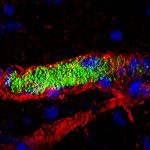Link to Pubmed [PMID] – 18066432
An. Acad. Bras. Cienc. 2007 Dec;79(4):617-38
Obesity is traditionally linked to diabetes and cardiovascular diseases. Very recent experimental, clinical and epidemiological, sometimes provocative, data challenge this automaticity by showing that not the amount but the distribution of fat is the important determinant. Moderate abdominal fat accumulation may thus be more harmful than even consequent overweight. In view of the worldwide burden of obesity, factors leading to it in children and young adults must urgently be identified. Since obesity is a very complex cardiometabolic situation, this will require to focus investigations on uncomplicated obese subjects and adequate animal models. The recent discovery of intergenerational transmissions of obesity risk factors and also the key role played by gestational and perinatal events (epigenetic factors) give rise to completely new concepts and research avenues. Considering the potential close relationship between microcirculation and tissue metabolism, demonstrations of structural and/or functional abnormalities in microvascular physiology very early in life of subjects at risk for obesity might provide a solid basis for further investigations of such links. Microcirculation(arterioles, capillaries and venules) is conceivably a key compartment determining over one or several decades the translation of genetic and epigenetic factors into fat accumulation. Available animal models should serve to answer this cardinal question.

